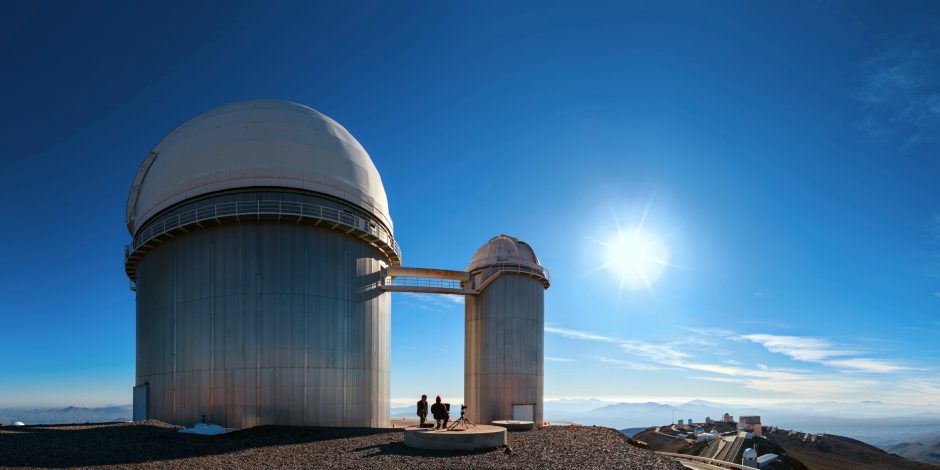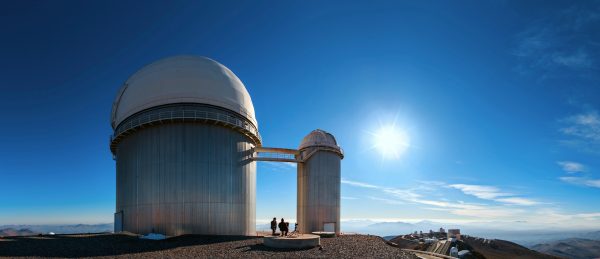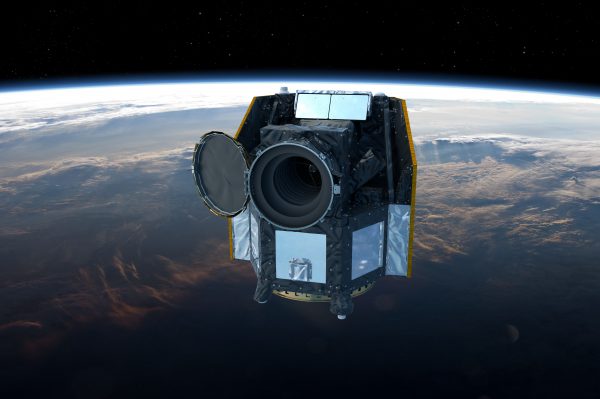Accurate measurements

By Martin C.E. Huber
“A neat example again how a new window to the universe opens up through improved measuring methods” – commented the President of the German Physical Society on the award of the 2019 Nobel Prize in Physics to Michel Mayor and Didier Queloz of Geneva Observatory.
In collaboration with colleagues from Marseille Observatory the two Nobel laureates had improved the measuring accuracy of their spectrograph at the 2-m telescope of the Observatoire de Haute Provence in 1995. By use of the ‘ELODIE’ instrument, which – owing to its sophisticated data analysis system – was able to measure efficiently, and at the same time more accurately, Michel Mayor and Didier Queloz became the first ones to verify the existence of an exoplanet.
Within the framework of international consortia, researchers at Geneva Observatory, have in the meantime developed even more precise instruments* that are now connected to telescopes of ESO, and thus become available for use to a wider circle of researchers.

ESO’s 3.6-metre telescope in La Silla in which the spectrograph HARPS is installed. (Photo: ESO/B. Tafreshi)
Other Swiss institutes have also been successful in pioneering projects within the framework of international consortia. Two years ago, tests with the precursor satellite ‘LISA Pathfinder’ showed that observations of gravitational waves in the frequency range 0.1 mHz to 0.1 Hz, i.e., at frequencies that will probably never be achievable on Earth**, are possible in space. The measurements with ‘LISA Pathfinder’ lasted half a year and showed that detectors such as those developed for the LISA mission itself (Laser Interferometer Space Antenna, with launch planned in 2034) achieve noise suppression to such an extent that LISA will indeed be able to measure gravitational waves in the intended frequency range.
This is another example of a successful cooperation within the framework of an international consortium. Major contributions were made by seismologist Domenico Giardini and his colleagues from ETH Zürich. The success of ‘LISA Pathfinder’ marked the green light for the actual LISA space project, which will detect sources of gravitational radiation across the entire sky and provide insight into the yet hidden world of gravitational radiation.
The Physics Institute of the University of Bern is particularly experienced in space missions; scientists at this institute have studied practically all kinds of objects in our solar system by use of space techniques. These include – as discussed in the last ‘PlanetS Newsletter’ – the solar wind as passenger of the Apollo missions to the Moon 50 years ago.
Given the rich experience of this institute, it seems rather natural that the international consortium for the forthcoming CHEOPS mission (CHaracterising ExOPlanet Satellite), by use of a satellite that will explore systems with exoplanets will be led by Bern. The launch of the mission is near: it is scheduled for December 2019.

Artist’s impression of CHEOPS, in orbit above Earth. (Image: ESA/ATG medialab)
Here, too, the aim is to achieve higher accuracy. An effectively baffled space telescope, well protected against scattered light, will examine bright stars that have known exoplanets by use of the transit method. As the observed exoplanetary systems are hosted by particularly bright stars, the good photon statistics make it possible to accurately measure even small differences in intensity. The object can thus be reliably characterized.
Institutes in twelve ESA Member States and ESA itself form the CHEOPS consortium. Four Swiss universities are involved – and it is a gratifying coincidence that the head of the consortium is Michel Mayor’s first doctoral student – Willy Benz!
Author: Martin C.E. Huber headed ESA’s Space Science Department from mid-1987 until mid-2000 and was Titularprofessor of ETH Zurich until he retired in 2001.
*’HARPS’ (precision approx. 1 m/s) since 2003 at the 3.6 m telescope on La Silla and ‘ESPRESSO’ (precision up to 10 cm/s) since 2018 at the Very Large Telescope (VLT) on Paranal.
**Seismic and other environmental influences produce a background that does not permit the detection of gravitational waves with a frequency below approx. 1 Hz on the ground. Therefore, gravitational wave detectors such as LIGO and Virgo only ‘see’ short-term signals from very energetic events, such as the last moments of the fusion of two black holes that rise above the background momentarily only.
Categories: External Newsletter
